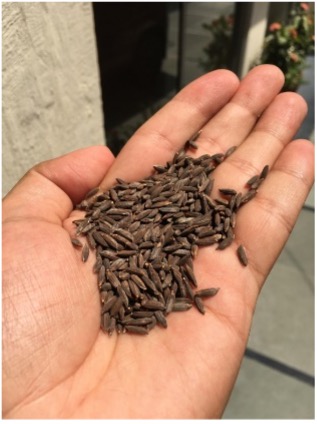Published on: November 1, 2022

Kalanamak rice
Kalanamak rice

Why in news?
Indian Agriculture Research Institute has successfully tested two new dwarf varieties of paddy in Uttar Pradesh that give double the yield
Highlights
- They have been named Pusa Narendra Kalanamak 1638 and Pusa Narendra Kalanamak 1652.
- The problem with the traditional variety of Kalanamak paddy is that it’s tall and prone to lodging, which badly impacted grain filling and quality. The yield, as a result, fell drastically, and the market for the rice dwindled.
What is new in this rice ?
- The yield is high, especially at lowlying land area. Compared to the traditional variety, the increase in production is three times.
- One issue was attack of blight bacterial disease. It has also been addressed by inducting blighttolerant genes
What is Kalanamak Rice?
- Kalanamak is a scented rice of Nepal and India .
- Its name means black husk. This variety has been in cultivation since the original Buddhist period(600 BC). It is popular in Himalayan Tarai of Nepale., Kapilvastu, and eastern Uttar Pradesh,where it is known as the scented black pearl.
- It is protected under the Geographical Indication (GI) tag system.
- History : Traditional variety of paddy with black husk and strong fragrance, which is considered a gift from Lord Buddha to the people of Sravasti when he visited the region after enlightenment
- Health benefits: It is rich in micronutrients such as Iron and Zinc. Therefore, this rice is said to prevent diseases borne out of nutrient deficiencies. Regular intake of Kalanamak rice is said to prevent Alzheimer’s disease
How is new rice variety cultivated?
- The use of a breeding method known as marker-assisted breeding. It helps breeders incorporate specific desirable traits into new varieties with more accuracy and speed.
- Marker-assisted breeding uses DNA markers associated with desirable traits to select a plant or animal for inclusion in a breeding program early in its development. This approach dramatically reduces the time required to identify varieties or breeds which express the desired trait in a breeding program.

